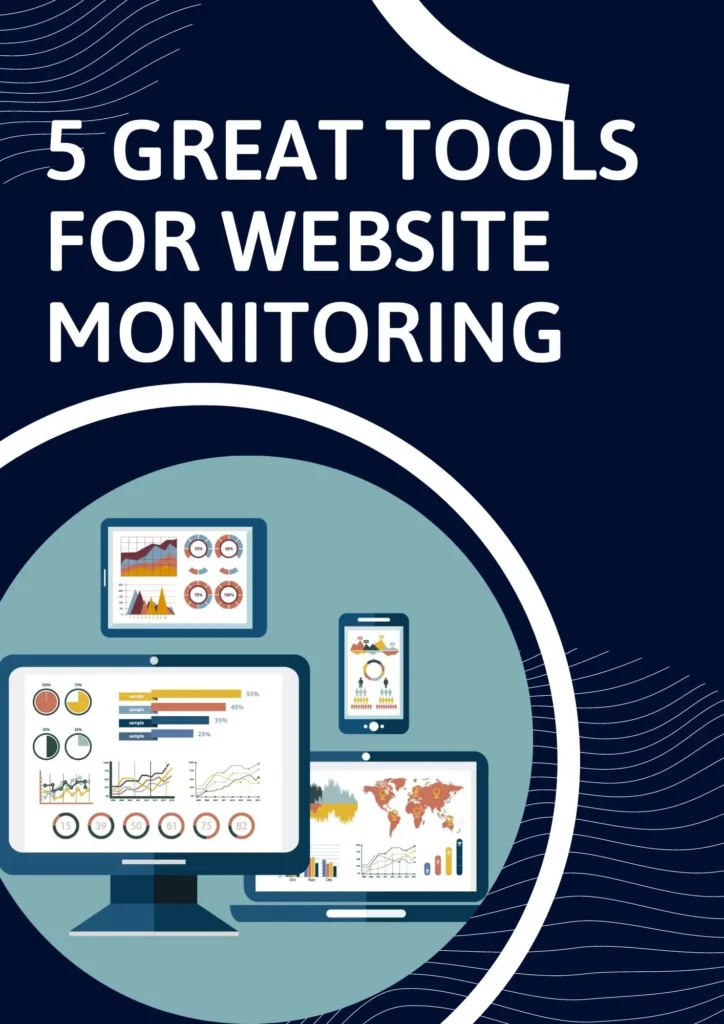In the realm of modern web development strategies, the journey to creating exceptional online experiences involves more than just design and functionality. It encompasses the seamless performance and reliability of websites, which directly impact user experiences and business success. One crucial aspect of this journey is website monitoring, which ensures that your website functions smoothly and efficiently. In this article, we’ll delve into the world of website monitoring tools and how they align with successful web development strategies.
Understanding the Need for Website Monitoring
As web users become increasingly demanding, a single glitch or downtime can significantly impact user satisfaction and even your bottom line. That’s where effective website monitoring comes into play. It’s not only about detecting issues but also about proactive measures to prevent disruptions. Real-time monitoring is essential to promptly address any hiccups that might arise. By maintaining high-quality user experiences, businesses can foster customer trust and loyalty, thus reinforcing their web development strategies.
Overview of Web Development Strategies
Before we dive into website monitoring tools, it’s crucial to recognize the role of web development strategies. These strategies are the foundation upon which websites are built, ensuring functionality, aesthetics, and usability. From responsive web design for various devices to streamlined navigation, these strategies create a strong backbone for effective websites. Successful web development is a continuous journey that requires the incorporation of the latest technologies and practices, and website monitoring tools align seamlessly with this approach.
Introducing Website Monitoring Tools
Website monitoring tools are the guardians of your digital presence. They oversee various aspects of your website’s performance, such as uptime, response times, and overall health. Using specialized tools dedicated to monitoring is a wise choice, as generic solutions might overlook critical aspects that impact user experiences. By having a comprehensive view of your website’s performance, you can identify potential issues before they snowball into major disruptions.
Exploring 5 Great Website Monitoring Tools

Let’s explore five remarkable website monitoring tools that align perfectly with effective web development strategies:
Pingdom:
The Pingdom is one of the most popular and trusted tools for website monitoring. It offers a comprehensive set of features that can monitor various aspects of a website, such as uptime, speed, transactions, user interactions, and more. Pingdom can also send alerts via email, SMS, or push notifications when something goes wrong with a website. Pingdom has a user-friendly interface that allows web developers to easily configure and manage their monitoring settings. It also provides detailed reports and insights that can help web developers analyze and improve their website performance.
UptimeRobot:
The UptimeRobot is another well-known tool for website monitoring that focuses on uptime and downtime. It can monitor up to 50 websites for free and check their status every 5 minutes. It can also monitor other types of services, such as ping, port, keyword, SSL certificate, and more. UptimeRobot can send alerts via email, SMS, webhook, or third-party integrations when a website goes down or comes back up. It has a simple and intuitive interface that allows web developers to easily add and manage their monitors.
New Relic:
A New Relic is a powerful and versatile tool for website monitoring that can also monitor other aspects of web development, such as application performance, infrastructure, logs, errors, and more. It can monitor websites from different perspectives, such as browser, server, network, and synthetic. New Relic can also provide real-time data and insights that can help web developers troubleshoot and optimize their website performance. It has a rich and customizable dashboard that allows web developers to visualize and explore their data.
Site24x7:
Site24x7 is a comprehensive tool for website monitoring that can also monitor other types of web services, such as APIs, DNS, email, FTP, SSL certificates, and more. It can monitor websites from over 100 locations around the world and check their availability, response time, content, functionality, and more. Site24x7 can also send alerts via email, SMS, voice calls, or third-party integrations when a website has an issue. It has a sleek and modern interface that allows web developers to easily configure and manage their monitors.
GTmetrix:
The GTmetrix is a specialized tool for website monitoring that focuses on speed and performance optimization. It can analyze websites using various metrics and best practices, such as PageSpeed Score, YSlow Score, load time, page size, requests, and more. It can also provide recommendations and tips on how to improve a website’s speed and performance. GTmetrix has a simple and elegant interface that allows web developers to easily test and compare their websites.
How These Tools Complement Web Development Strategies
The synergy between website monitoring tools and web development strategies is evident in their combined impact on user experiences. These tools help in identifying and addressing performance bottlenecks, thus optimizing code efficiency and the functionality handled by both back-end developers and front-end developers. By ensuring a seamless user experience across devices, browsers, and design decisions, they uphold the principles of effective web design. Additionally, by monitoring website speed and response times, these tools contribute significantly to user satisfaction and enhanced engagement, positively impacting search engine rankings and digital growth.
Incorporating Tools into Your Web Development Workflow
Integrating website monitoring tools into your web development strategies is a seamless process. They become an integral part of agile development workflows, enabling you to identify and rectify issues early in the development stages. Proactive monitoring is the key to maintaining the health of your website and enhancing its performance. By fostering collaboration within development teams, these tools enhance overall efficiency and help in delivering a high-quality website that aligns with both design strategy and overarching business strategies.
Analyzing the Results and Continuous Improvement

Website monitoring tools provide a wealth of data that goes beyond detecting issues. By analyzing trends and patterns using marketing tools and Google Analytics, you can identify areas for improvement within your web development strategies. This iterative approach allows you to implement changes based on monitoring insights, aligning your website with both technical excellence and overarching business goals, such as search engine optimization.
Conclusion
In conclusion, website monitoring is a crucial aspect of modern web development strategies. By using specialized tools such as Pingdom, UptimeRobot, New Relic, Site24x7, and GTmetrix, web developers can ensure the seamless performance and reliability of their websites. These tools align seamlessly with effective web development strategies, enhancing user experiences, fostering customer trust and loyalty, and positively impacting business outcomes. Integrating website monitoring tools into your web development workflow is a seamless process that can enhance overall efficiency and help in delivering a high-quality website that aligns with both design strategy and overarching business strategies. By analyzing the results and continuously improving your website’s performance, you can stay ahead of the competition and foster digital growth.







